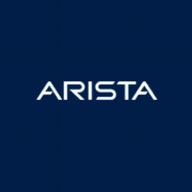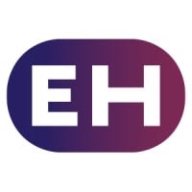

ExtraHop Reveal(x) and Arista NDR compete in the network detection and response category. ExtraHop Reveal(x) may have the upper hand due to its advanced data analysis and machine learning capabilities, while Arista NDR is recognized for its scalability and real-time traffic analysis.
Features: ExtraHop Reveal(x) stands out with its machine learning-driven behavioral analysis, customizable dashboards, and real-time threat detection. It also provides deep insights into network behaviors. Arista NDR offers scalability, real-time traffic analysis, and comprehensive insights into network traffic, helping users guard against vulnerabilities.
Room for Improvement: ExtraHop Reveal(x) could improve integration capabilities with more security vendors and protocols and enhance support options for its query language. It also needs better cloud integration support. Arista NDR should expand support in the Middle East, enhance its presence in the NDR market, and increase its engineering staff to meet demand.
Ease of Deployment and Customer Service: Both products support on-premises and hybrid cloud environments. ExtraHop Reveal(x) supports public cloud deployment, which Arista NDR does not. ExtraHop users report responsive support, though with some inconsistencies, while Arista NDR users often do not need assistance due to product reliability.
Pricing and ROI: Both ExtraHop Reveal(x) and Arista NDR are significant investments. ExtraHop's costs may rise with additional features, but users often see immediate ROI with improved network visibility. Arista NDR is considered more cost-effective with strategic subscriptions and managed services. Fast ROI is reported for both, especially when integrated with additional resources.
| Product | Market Share (%) |
|---|---|
| ExtraHop Reveal(x) | 13.4% |
| Arista NDR | 7.0% |
| Other | 79.6% |

| Company Size | Count |
|---|---|
| Small Business | 5 |
| Midsize Enterprise | 2 |
| Large Enterprise | 7 |
| Company Size | Count |
|---|---|
| Small Business | 3 |
| Midsize Enterprise | 4 |
| Large Enterprise | 9 |
Arista NDR (formerly Awake Security) is the only advanced network detection and response company that delivers answers, not alerts. By combining artificial intelligence with human expertise, Arista NDR hunts for both insider and external attacker behaviors, while providing autonomous triage and response with full forensics across traditional, IoT, and cloud networks. Arista NDR delivers continuous diagnostics for the entire enterprise threat landscape, processes countless network data points, senses abnormalities or threats, and reacts if necessary—all in a matter of seconds. The Arista NDP platform stands out from traditional security because it is designed to mimic the human brain. It recognizes malicious intent and learns over time, giving defenders greater visibility and insight into what threats exist and how to respond to them.
The Advent of Advanced Network Detection and Response & Why it Matters
ExtraHop Reveal(x) is a highly effective network traffic analysis (NTA) solution that leverages a cloud-native architecture to empower organizations to overcome a world filled with increasingly sophisticated threats. It identifies 25% more threats than its competitors. Additionally, organizations that employ Reveal(x) say they resolve issues 77% percent faster than they would if they were using other similar solutions.
ExtraHop Reveal(x) Benefits
Some of the ways that organizations can benefit by choosing to deploy ExtraHop Reveal(x) include:
ExtraHop Reveal(x) Features
Reviews from Real Users
ExtraHop Reveal(x) is a solution that stands out when compared to many other similar solutions. Two major advantages that it offers are its versatility and its ability to quickly identify the root cause of an application’s issues.
John B., the senior monitoring engineer at a financial services firm, says, “It's useful for different teams in our organization. The cybersecurity team uses it because it has got great analytics for anomaly detection, malware detection, and ransomware. It's used by the networking people because it's great to be able to get the three-way handshake between systems to see how your network is doing. The microservices for DNS use it because they like to be able to see how their DNS services are operating and how many DNS requests are being rejected, denied, or dropped. Application people love it because it fully decrypts their traffic.
Henry S., a systems engineer at LifePoint Health, writes, "When there are performance issues with an HTTP app, ExtraHop enables us to identify the causes within a few minutes. We can see what transactions are being impacted by something that may be happening within the server environment."
We monitor all Network Traffic Analysis (NTA) reviews to prevent fraudulent reviews and keep review quality high. We do not post reviews by company employees or direct competitors. We validate each review for authenticity via cross-reference with LinkedIn, and personal follow-up with the reviewer when necessary.